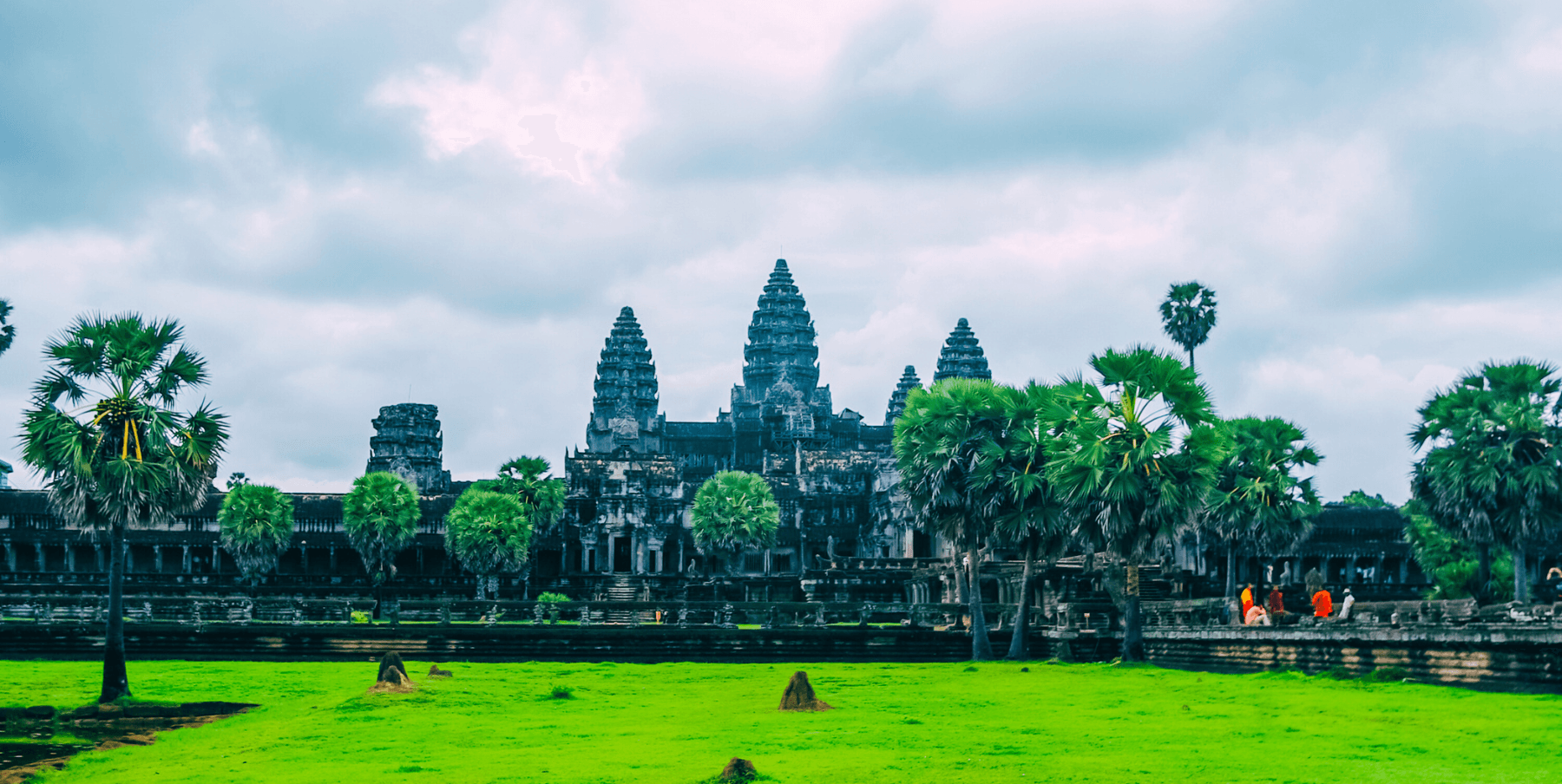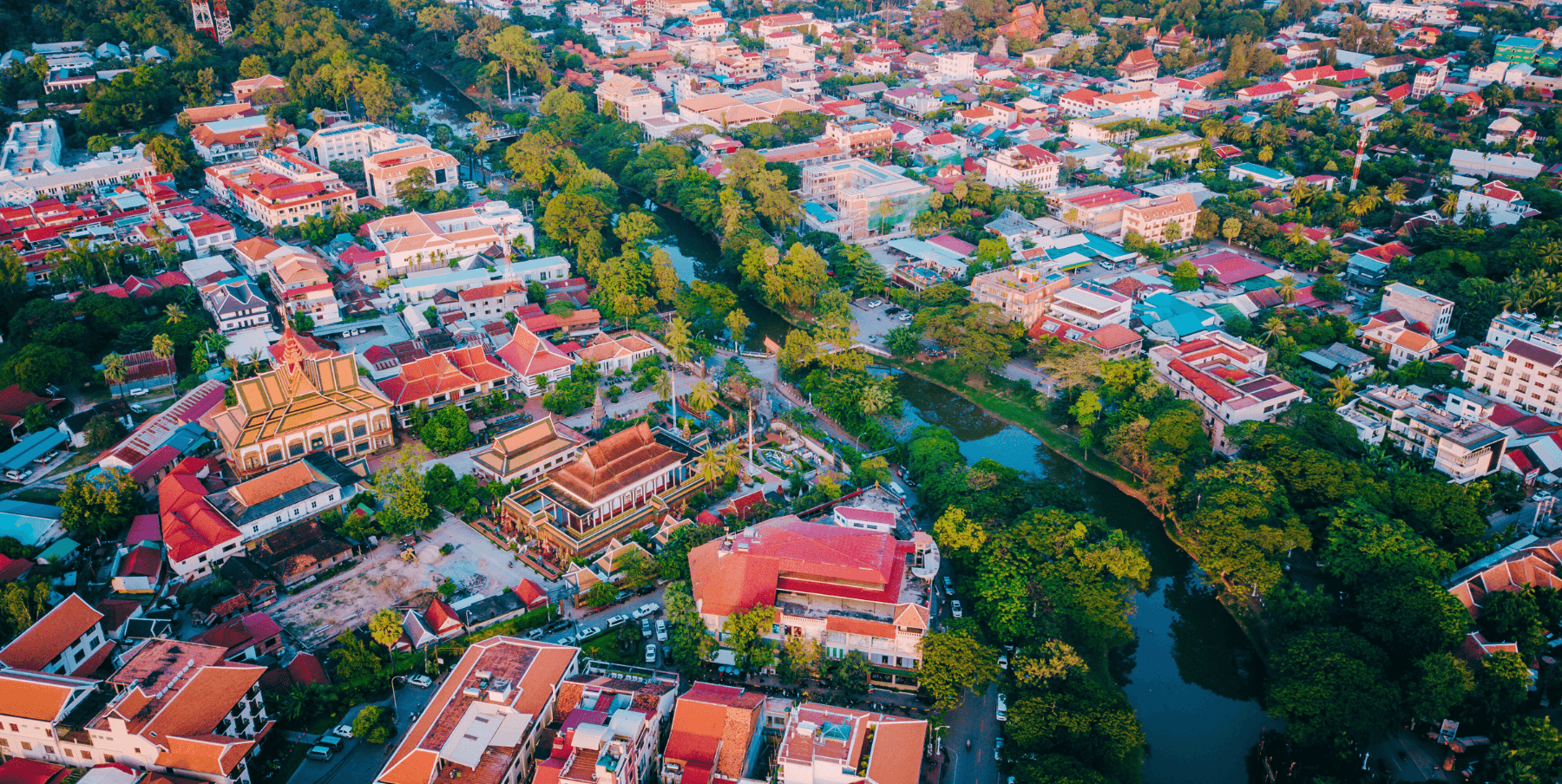Siem Reap is an area located in the northwest part of Cambodia. Once the seat of power for the great Khmer Empire, this location is home to the most ornate temples and as such is the most popular tourist site for those taking a tour of Cambodia.
Angkor Wat temple, located in the northwestern portion of Cambodia, is the largest religious monument in the world. Named a UNESCO World Heritage Site in 1992, its history dates back to the end of the 12th century when its construction began under the reign of the Khmer Empire King Suryavarman II. Construction appears to have halted when Suryavarman died in 1150, leaving some portions of the complex unfinished. Angkor Wat is a classic example of Khmer Empire architecture, with a harmony of design and precisely planned proportions. Unlike other Khmer Empire temples, this one was constructed facing the west, which has caused some to theorize it was originally intended to be a funerary temple for Suryavarman. Originally dedicated to Vishnu as a Hindu temple, its use was gradually transformed into a Buddhist place of worship moving into the 14th century. Although slightly neglected towards the end of the 16th century, the temple was never overtaken by the jungle, largely due to the natural barrier created by the moat surrounding it. The Thai people were enthralled with it when they invaded to take over in 1431 and the French were also enamored with its splendor in the 19th century when they introduced it to the Western World. Henri Mouhot’s book in published in 1860 ‘Travels in Siam, Cambodia, Laos and Annam” is largely credited with causing the first big tourism boom to Angkor Wat. The French were part of the catalyst to inspire a major restoration project on the temple in the 20th century. The temple has been and still remains a powerful symbol of Cambodian national pride.

The reign and death of Suryavarman were quickly followed by an invasion by the Cham who retained control of the area for 4 years until the legendary Jayavarman VII managed to counter-attack and regain control in 1181. Thus began the most prolific period of monument building, and one of the last, for the Khmer Empire. Jayavarman VII started building monuments in Siem Reap with great expediency, that often times the architectural style (Bayon) is considered to be inferior to that of the earlier temple building. Some of his most noted works are the capital city of Angkor Thom including Ta Prohm temple, Bayon, Banteay Kdei, and Preah Khan. Ta Prohm temple was intentionally left in its “natural state” to be an example of how the area looked when first discovered. Restoration work here has only gone so far as to shore it up to prevent further collapse and to clear an entryway. Bayon temple was used as a State temple by Jayavarman VII and is one of the more complex structures in terms of design and meaning. A mass of face-towers create a stone mountain here with countless ‘faces’ on each tower. Many periods of subsequent re-models to this temple also create a complexity of design that other structures do not have.
